In early May of 2024, we drove and bushwacked into the depths of one area around Shasta Lake in search of the Minnesota Mountain Onion, a rare high-elevation, ridge-top dwelling onion described in 2022.
The Northeast area of Shasta Lake takes patience to explore, especially with a non-4×4 vehicle, but it’s totally doable. We’ve been to the Chirpchatter Creek area twice before this trip, which is in the general-ish area that this blog covers, but this adventure took us on new roads. I wrote about the previous trip to the area in a previous blog post on hunting for rare snails. Since this was our third trip down these windy-a$$ roads, we were smarter, aired our tires, and brought extra tire patches to ensure we didn’t end up in a tire shop like the previous time.
On this trip, we camped near Whiskeytown Lake towards Iron Mountain the night before, so it was a day full of driving backroads which ended with a drive back to our home in Cobb in Lake County. Lots of mileage this day.
Once in the Shasta Lake area, we puttered along the back roads to the Dekkas Creek Saddle, which took upwards of two hours due to the many stops to chuck rocks off the road. Thankfully, we only ran into ONE small fallen tree, a Pacific Dogwood that was easy enough to snap off enough branches to squeak along the outside. This is always a fear for us.
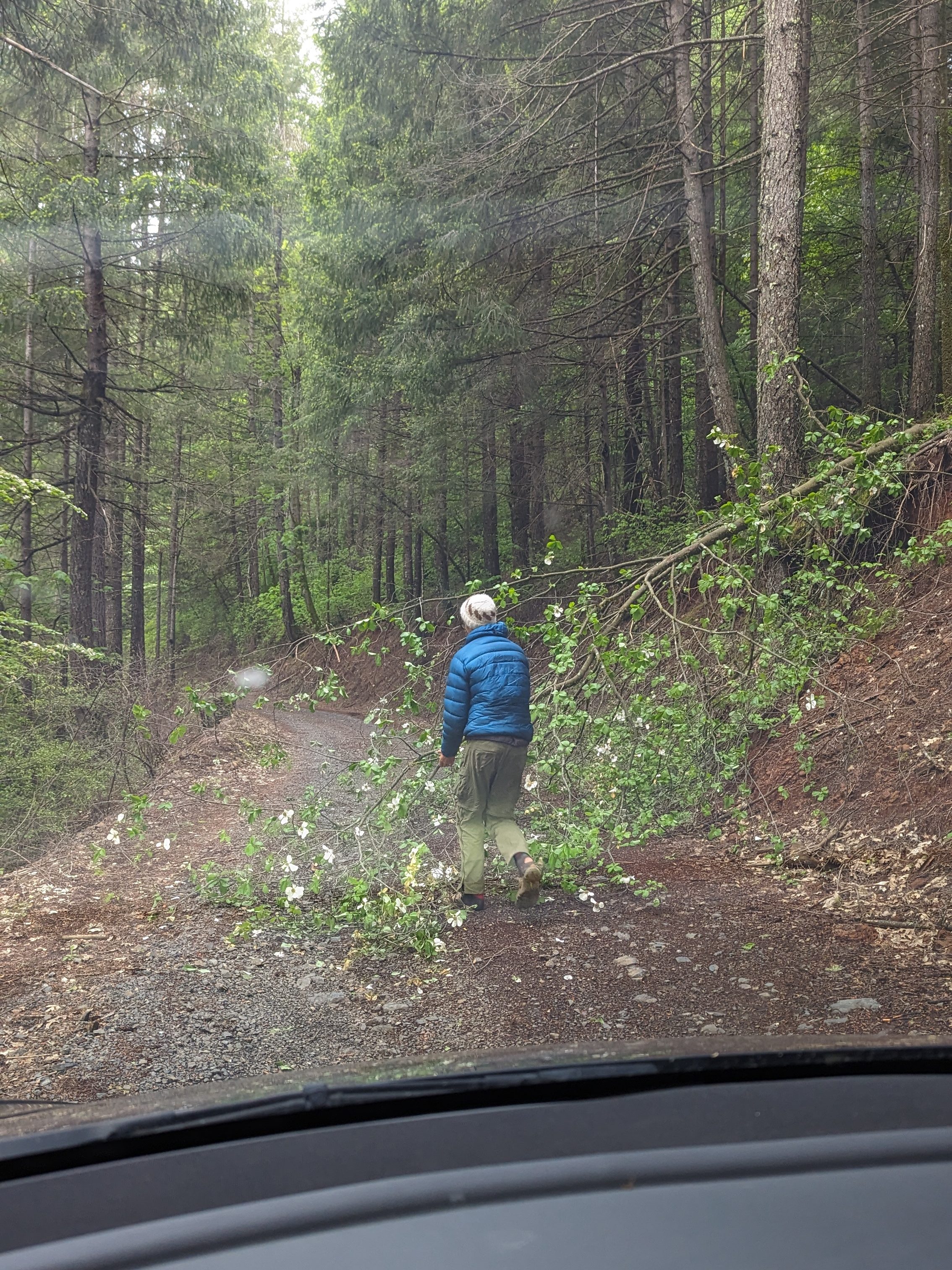

Eventually, we parked at our “trailhead,” aka a pull-out along a curve in the road towards Minnesota Mountain, located at 40.86035, -122.17872. The botanical gods were on our side this day as we found the bushwhacking along the ridge from where we parked much easier than expected. However, I’m not sure I’ve EVER come across so many large and fresh black bear droppings EVER, they put BC bears to shame in the 💩 department! There were so many scrapes and ruffling in the deep leaf litter, which were awesome and a bit hair-raising, most likely puma scrapes. Normally, in California, we rarely need to call out “Hey Bear,” but having seen two black bears on the drive-in, one of which was massive, I definitely felt the need to make our presence known more than usual. Besides one deer and the many mountain lion scrapes, we didn’t see any other wildlife of note.
Bushwhacking up the ridge was a good cardio workout due to the incline and our early spring athleticism (or lack thereof); it was very “easy” by our standards as we wove through the pygmy oaks, poison oak sprouts, and occasional downed logs.
Before heading to the known onion population, we descended down a steep, steep slope to reach an opening and perhaps an awaiting new onion population (*fingers crossed*). It was originally estimated to be ~200m but felt like much more. My knees did not enjoy this descent, and we ended up empty. So, we climbed back up to the ridge to head toward the known onion population.
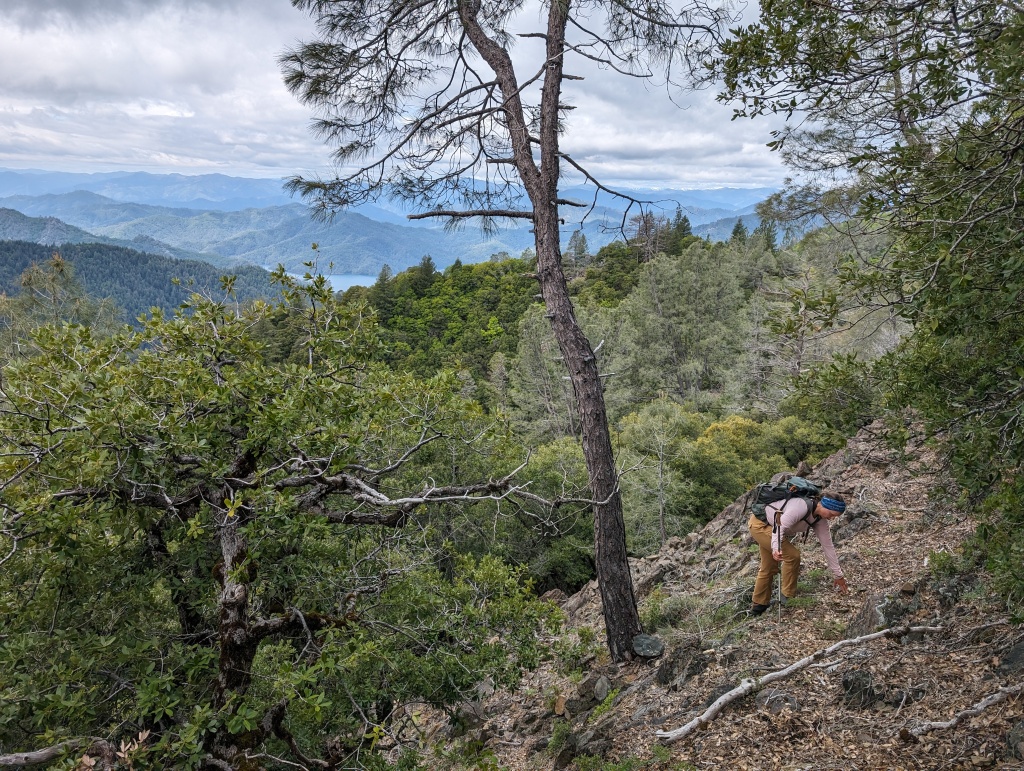
During the ’23-’24 winter, Trevor spent many hours researching these trips, hence why there was a general plan. I’m talking a 1000+ page Word doc for most of our summer adventures. This day, we followed in the footsteps of botanists like Julie Kierstead and colleagues who illuminated this plant for the world! So fun! More on that later.
After a jaunt down a road that seems to circumnavigate Salt Creek Mountain, we turned west onto a ridge, passing through an old campsite and onto the exposed ridge. This is where you’d probably assume we waltzed right onto the onions right away, and oftentimes, that’s the case, but not today. We carefully and closely explored a south-facing hillside and came up empty—ohhh no.

So, while I carefully combed the remaining hillside I could manage, as I am not a mountain goat, Trevor went further west. Before long, over the radio, I heard “I got it,” the classic phrase we use when we’ve found the target plant.


Trevor found the site previously documented by Julie Kierstead and Len Lindstrand III. It is a fantastic chaparral ridge among black oak and montane pine forests. It is a very neat site, with wonderful views to boot!


Ecology
As the photos above show, this onion thrives in an “open, gravely” substrate. It resides in “mountain ridge tops in conifer forest and chaparral” in the Klamath Range of Shasta County (Jepson Herbarium).
The onion grows between 1180-1300m (3871-4265ft) and can be seen flowering between April and May. On iNaturalist, the only two entries are from May 2019 and 2024, which are our entry and Julie’s. On CalFlora, some flowering dates include May 2, 2019, April 15th and May 4th in 2020, and April 29th, 2021. Now, we can add ours on May 6th, 2024 to the list.
Associated species include Arctostaphylos patula, Cercocarpus betuloides, Quercus garrayana var. breweri, Q. chrysolepis (shrub form); growing with Ceanothus prostratus var. prostratus, Calyptridium monospermum, Viola purpurea, Eriogonum ursinum var. erubescens, Aspidotis densa, Lomatium dissectum, Lomatium macrocarpum, Pentagramma triangularis, Penstemon azureus, and Fritillaria affinis. -Calfora Observation on April 29, 2021 by Len Lindstrand III
Plant Description and key characteristics:
For all you botany-Jepson Maunel-reading-nut-heads, Allium incomputum is characterized by:
- Leaves flat or widely channeled, generally ± sickle-shaped; plant in fruit dry, breaking at ground
- Outer bulb coat sculpture 0 or cells ± square, in 2–3 rows basally
- Stem cylindric or ± flat, not winged
- Stamens exserted or ± at the same level as perianth
- Leaves 2 per stem
- Perianth parts 5–8 mm, blunt; pedicels 4–9 mm; stamens > perianth; se KR
For my baby botanists:
- Two leaves
- Flat stem, which is 1-7mm wide
- Between 17-55, pink-white flowers create the inflorescence (aka the blub-shaped flower)
- These flowers have narrow, lanceolate-shaped “petals” (technically perianth parts) with blunt tips and green midveins. Looking closely, you’ll see greenish midveins with stamens (pollen-carrying male parts).

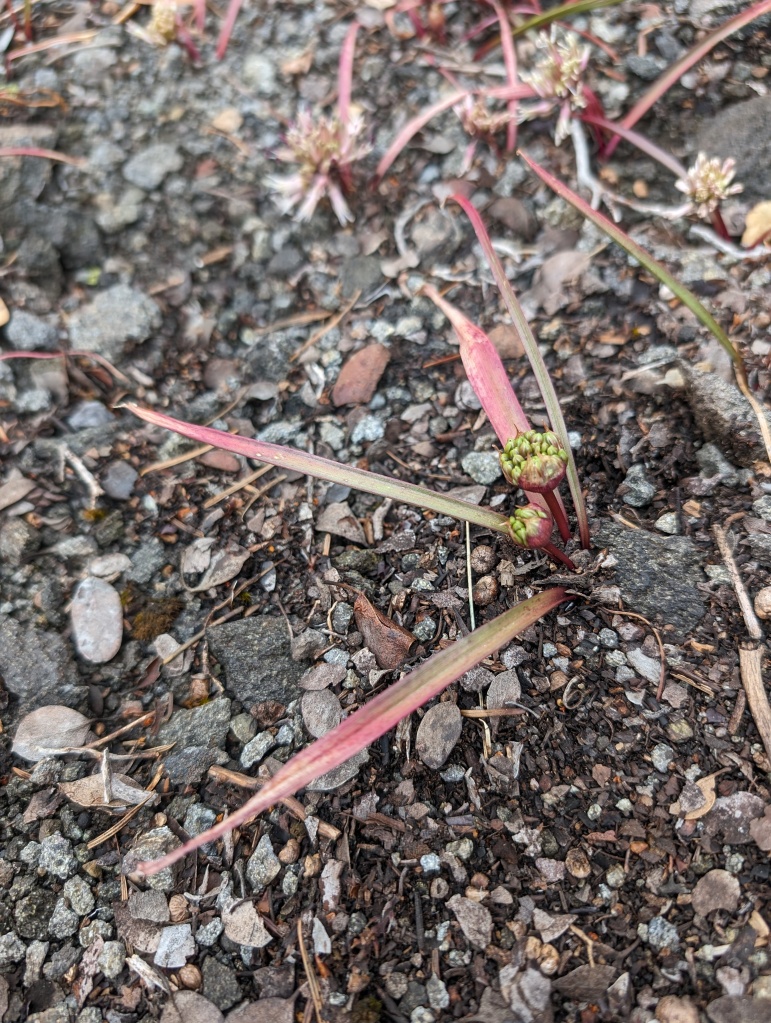
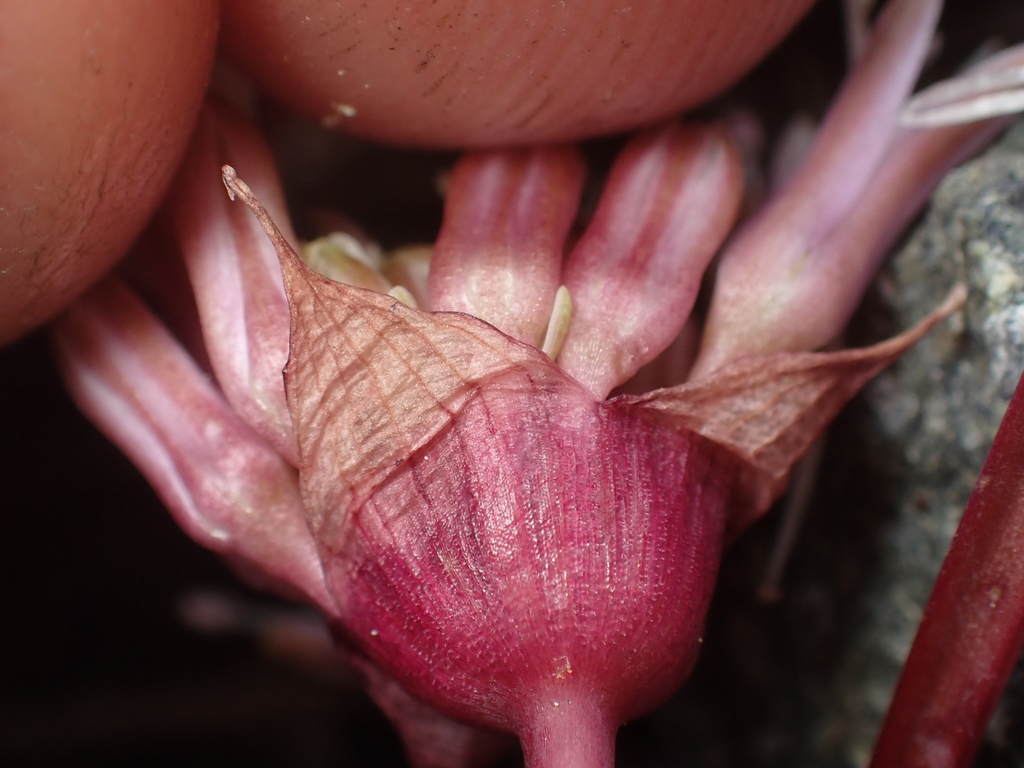


Once back on wheels, we descended the saddle faster than we ascended, fueled by the desire to reach pavement. Unfortunately, the driving descent meant we had additional rocks to fling off the road. We learned the hard way, perhaps something obvious to most, that we have less clearance at the front when going downhill. I’m not sure why it’s taking this long to figure that out.
The original adventure(s):
All props go to Julie Kierstead and Len Lindstrand III, who originally found it in 2015 with the help of an “incidental helicopter touchdown on Minnesota Mountain in 2015 on our way back from Tombstone Mountain.” The team then returned in 2019, which Julie describes in a Shasta CNPS Chapter article to any folks interested: “Take your chainsaw to remove the trees across the road, and kind of death-march climb up through the poison oak to get to the top. I don’t ever want to make that climb again.” While would do the hike again, the drive on the other hand. . . I’d strongly insist we do it in a more capable vehicle.
“The specific epithet, incomptum, means disheveled, unpolished, untidy, unkempt, and refers to one notable characteristic of this onion.” –CNPS Article
It took seven years for the onion to be officially recognized; science is often slow, folks! We often get asked the question, regarding our interesting finds and the few species we believe to be new, “when will you find out if it’s a new species?” Unfortunately, we always have a “disappointing” but realistic answer: awhile.
The CNPS article is worth a read: New Onion Species Described, written by Shasta CNPS chapter and published on May 13, 2022.
Other Species we stumbled upon:
While the focus this day was the onion, here are a few other critters we observed and documented. The remaining can be found on our iNaturalist page; here’s a link for May 6th, 2024.
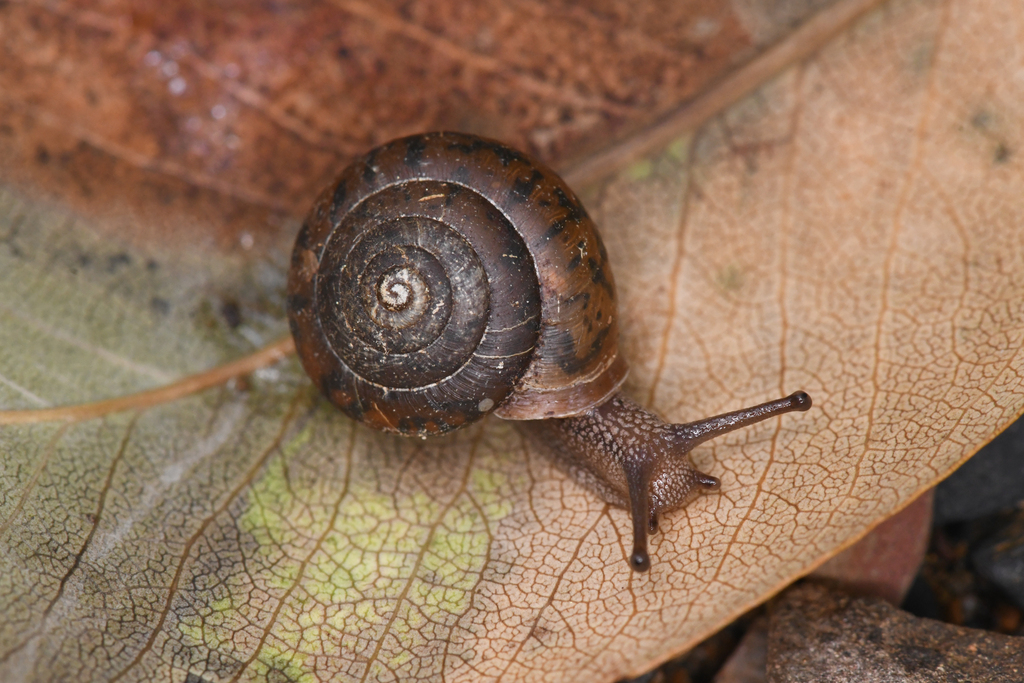
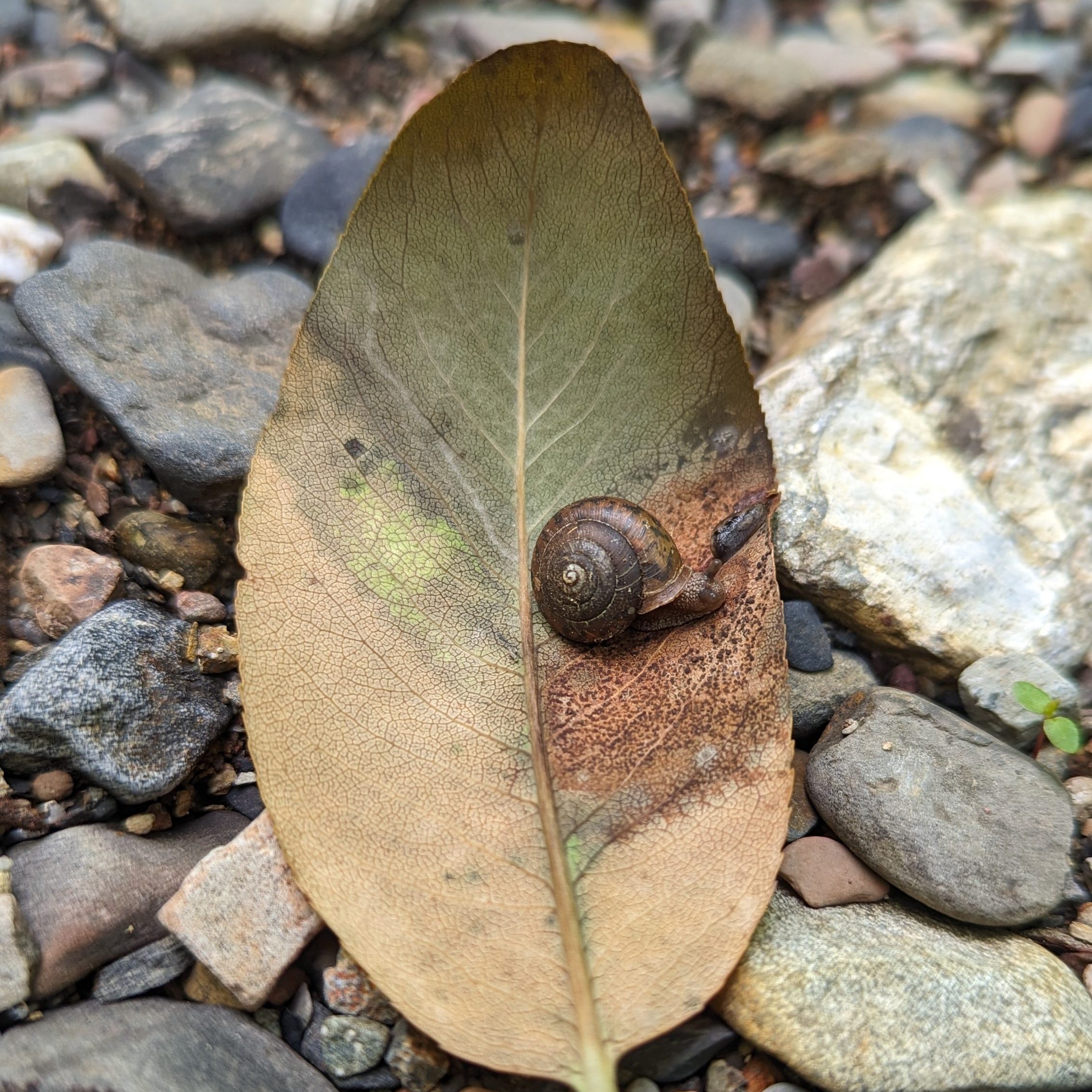
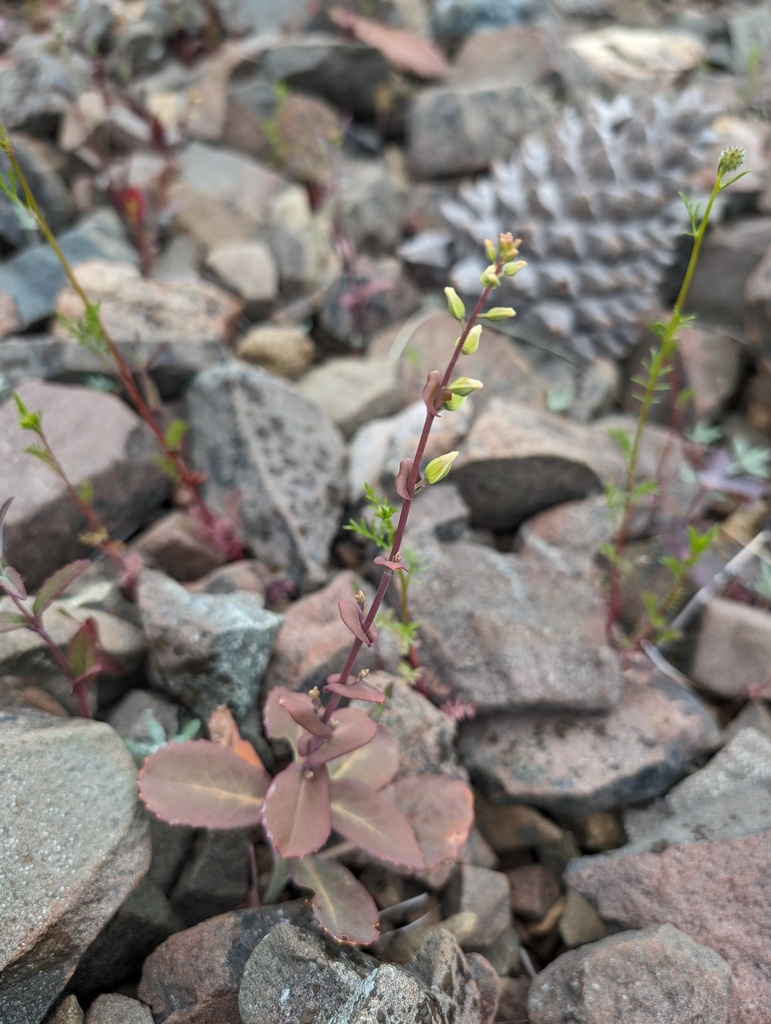
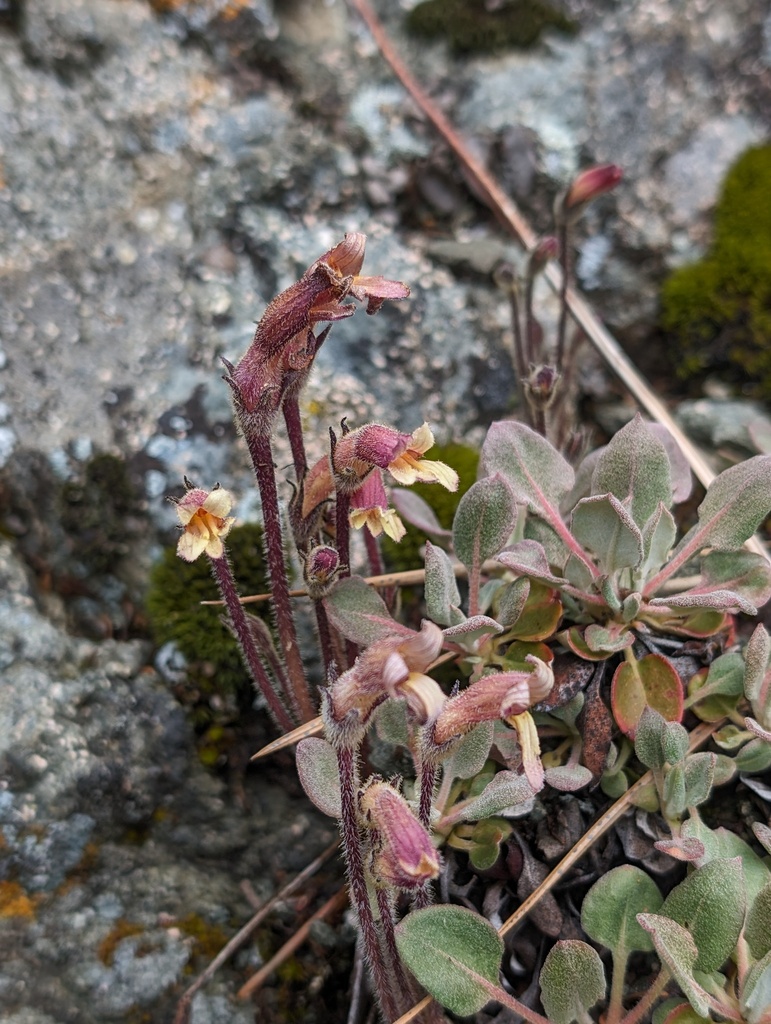
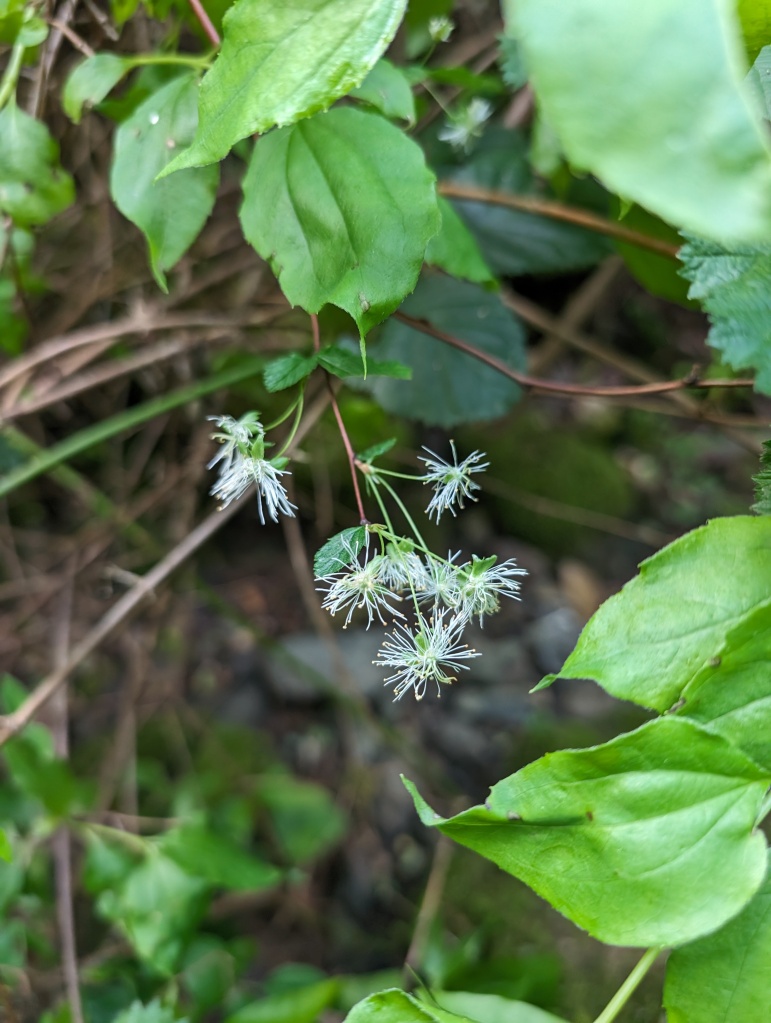

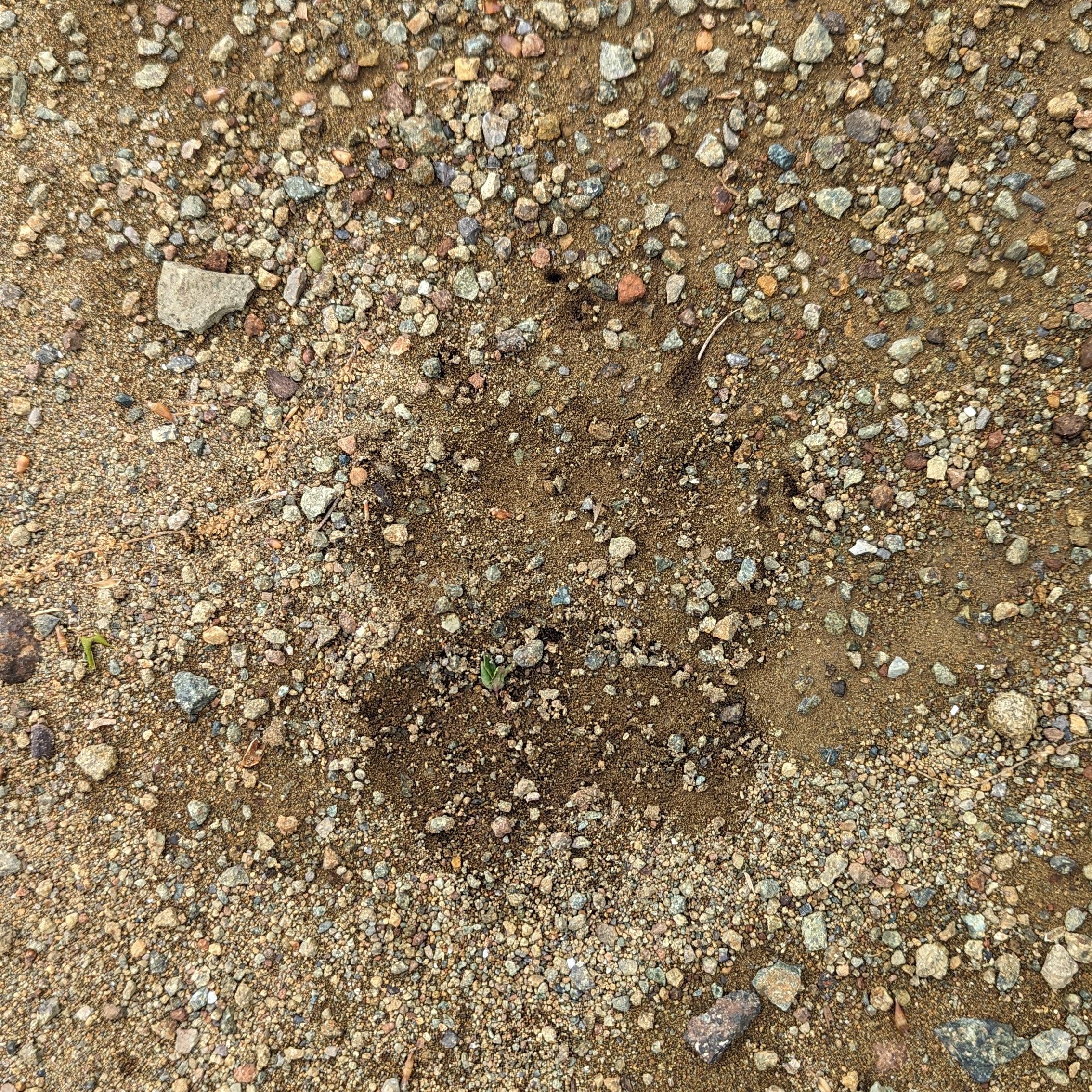
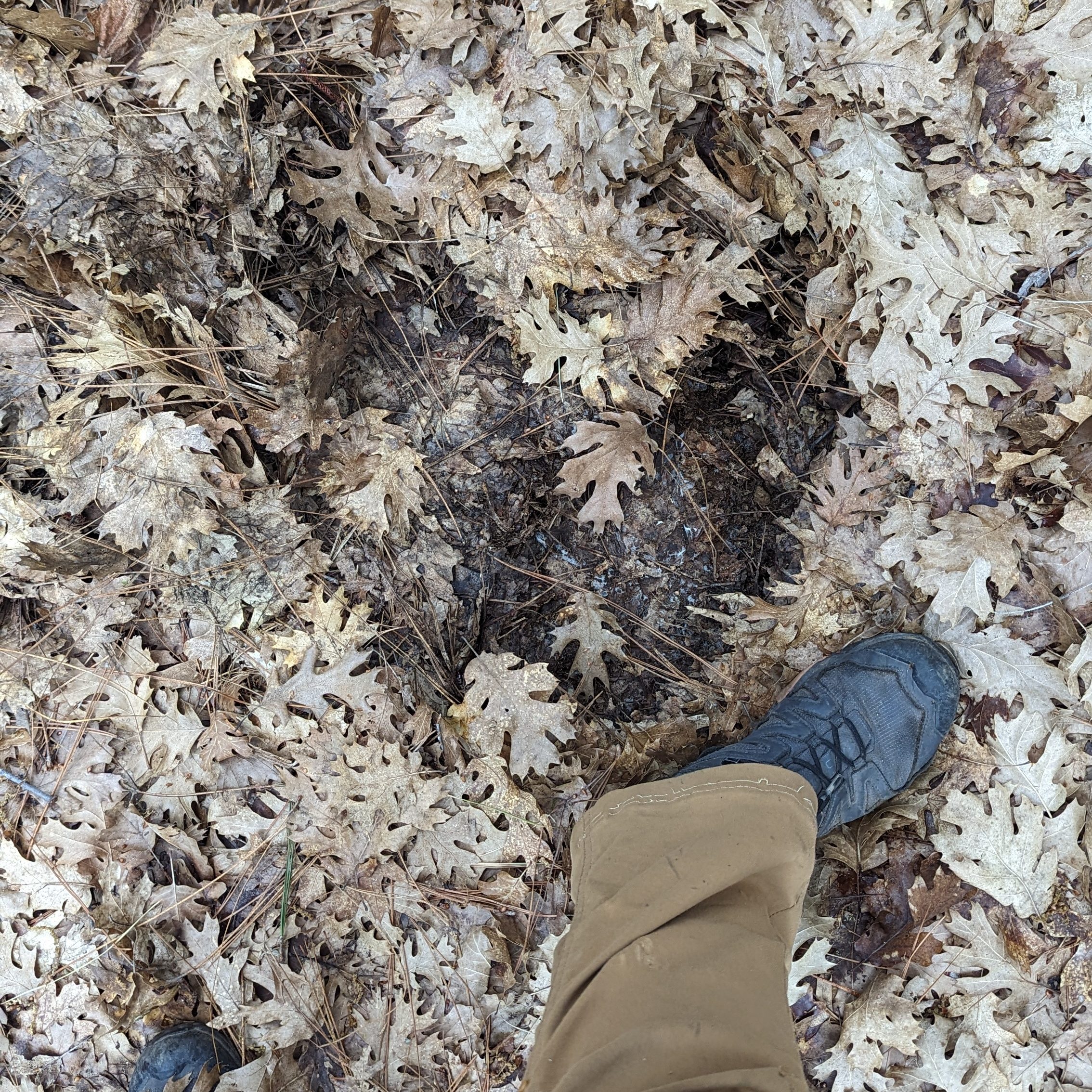
Wrap-up:
Once we were “out of the woods” of the more remote area, we stopped four times during the drive to sweep for insects (stoneflies were the focus), soak in the creek’s beauty, and reflate our tires.
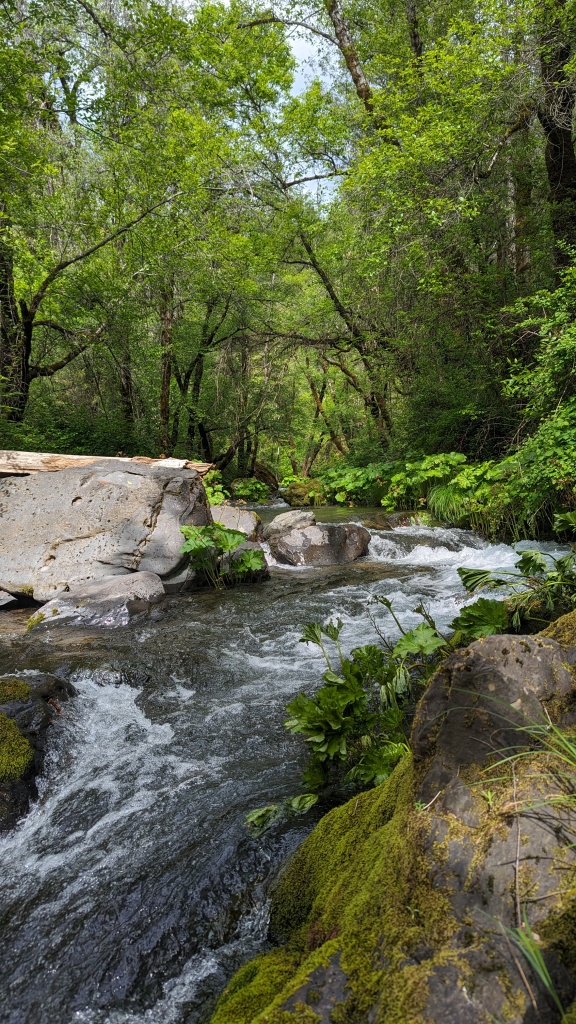



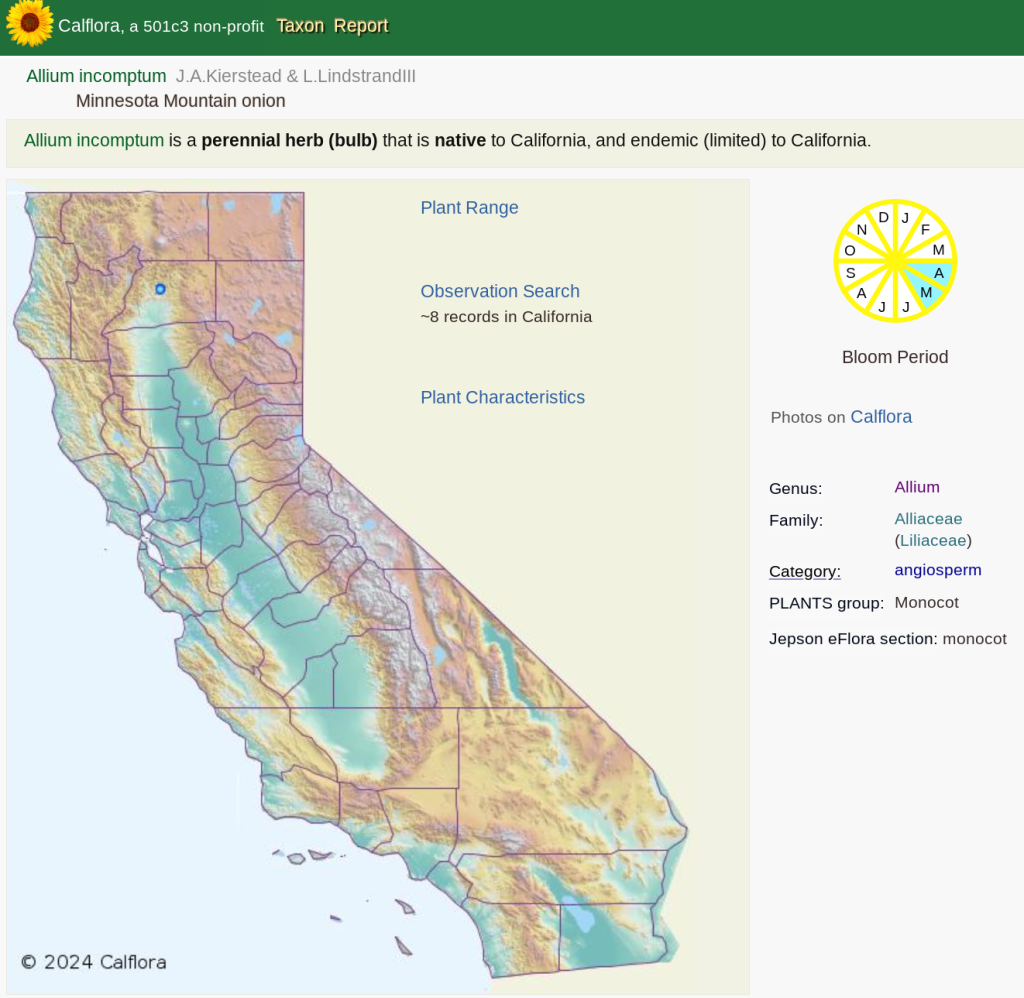
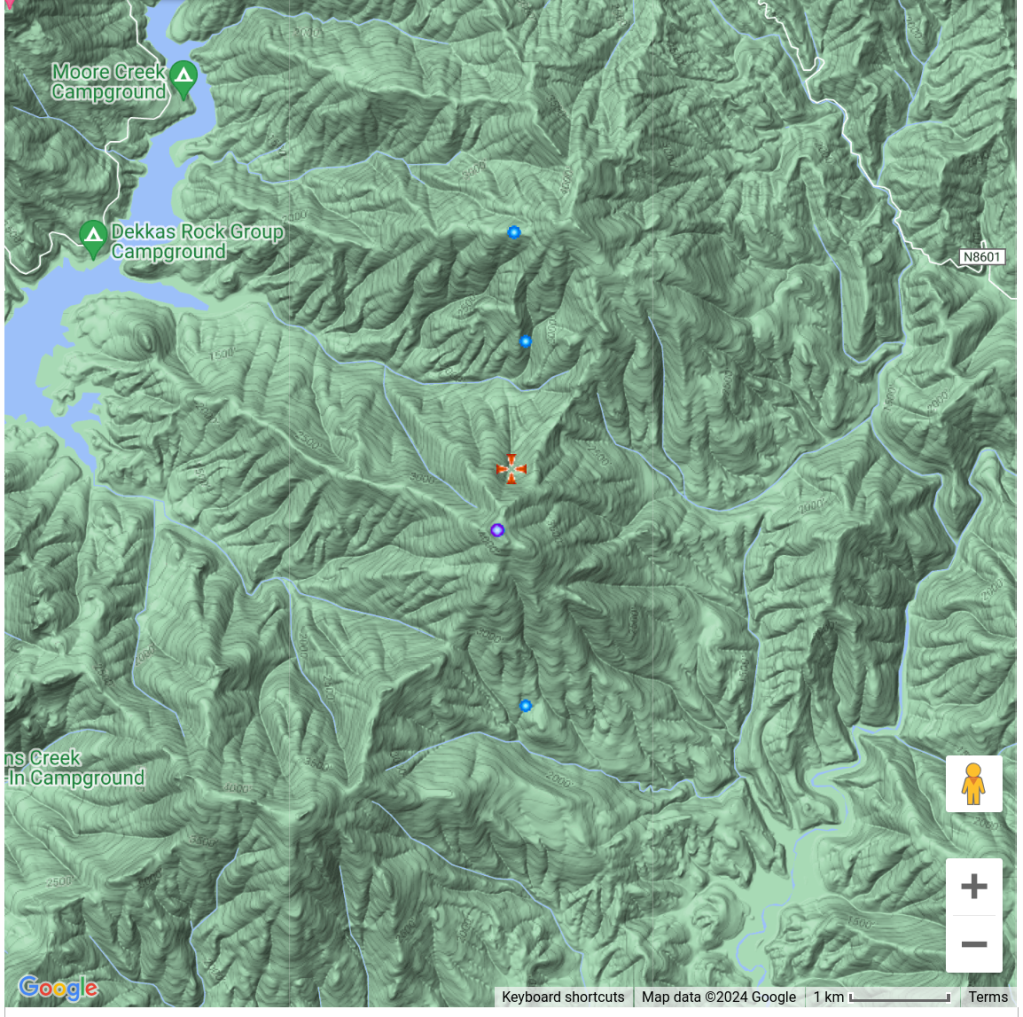
Dear Chloe,
I always get a smile and a chuckle when I read your blogs. California is wonderful to you two and keep sharing with us all.
Loads of Lovexxxxxx
LikeLiked by 1 person
Chloe, That was fantastic and such an enjoyable read. Sounds like you had quite the adventure. You should share your adventure with the PBC peeps sometime at one of our meetings. They would especially enjoy the bear stories.
LikeLike
Thank you, so glad you enjoyed this blog post! But since you left an anonymous comment I don’t know who exactly to thank! Thanks for thinking that PBC folks would be interested in my tales, but I think we’ve got enough to cover during meetings without adding my ramblings 😛
LikeLike